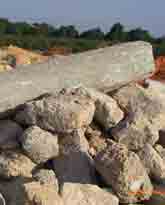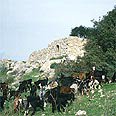Solomon and Jerusalem

"urusalem" in Amarna cuneiform according to CIAS
Photo source: California Institute for Ancient Studies A recent and still ongoing discussion on ANE focused on the names of Solomon and Jerusalem. The discussion spanned the times from the Execretion Texts in the early 2nd Millenium BCE to the Massoretes in the late 1st Millenium CE. It began when "John" suggested that Solomon's name and the name of Jerusalem, the name of the Canaanite god Shalim as well as other names of the period such as Absalom are related, theophoric, and are "suspicious." Now, I have paid quite a bit of attention to this in the study of the early Iron Age that I'm working on, so this was pretty interesting, although I did not want to involve arguments from my study. So I just asked questions: Why is it suspicious? What does it suggest?
Professor Niels Peter Lemche has been kind enough to respond and even later make available a study of his that deals with the issue (See Jim West's blog post here). Robert Whiting pointed out that in this paper, the assumption is made that Jerusalem is written with the Akkadian determinative URU as URU-salem, but in fact it is written URU u-ru-sa-lim. How well can we still identify the component of "urusalem" as the word Shalem or diety Shalim? It's not clear. I suppose that the Biblical books provide evidence that some identification was made, at least in the Second Temple period and perhaps even the First Temple period. If so, why are we to suppose that before then it wasn't so identified?
Subsequent to publishing this Duane Smith commented on my post in his blog and I published a followup/response.
References and Related Articles:
- Izreel, Shlomo. The Amarna Tablets. http://www.tau.ac.il/humanities/semitic/amarna.html. 2000.
- Lemche, Niels Peter. "Jerusalem and King Solomon: How Writers Create the Past." In Recenti Tendenze nella Ricostruzione della Storia Antica d'Israele, ed. by Mario Liverani. Rome, Accademia Nazionale dei Lincei: 2003.
The articles of Finkelstein, Dever, Ska, Soggin, Lemche, Naaman, Davies, Garbini, and Thompson are all in English. Abstracts of the contributions to the book can be read here.













